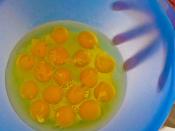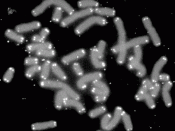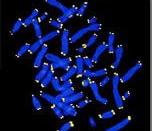The tiny "caps" that keep our chromosomes from fusing together are also providing clues that could eventually lead to the achievement of one our nation's most important public health goals: extending good health well into old age.
These caps are called telomeres, and they're at the center of much of the current research into the aging process. A study recently published in science journal The Lancet links the lengths of telomeres with rate of survival among people over 60, the first study to make this connection.
What are Telomeres?
To help understand the role telomeres play within the human body, it's useful to review some basic biology. All of the tissues within the human body are made up of individual cells. These cells contain chromosomes within their nuclei. Chromosomes are the packages that hold most of our DNA - the genetic instructions that tell the cell what to do.
Telomeres are repeating DNA sequences at the ends of the chromosomes. They do not contain any genetic instructions; they simply repeat a sequence of DNA over and over. When we are young, the telomeres are very long - they may contain as many as 20,000 base pairs of DNA.
What do Telomeres do?
Telomeres are thought to serve a couple of purposes within human cells. One, the telomeres form end caps for their chromosomes. Without them, the body would have no way to know where the chromosomes ended. It would treat them as "broken" pieces of DNA and would attempt to repair them by joining them with other chromosomes. With telomeres, the body can tell where one chromosome ends and another begins.
Second, scientists theorize that telomeres may serve as genetic "clocks." As we grow and age, our cells divide. One parent cell divides into two daughter cells, making...


